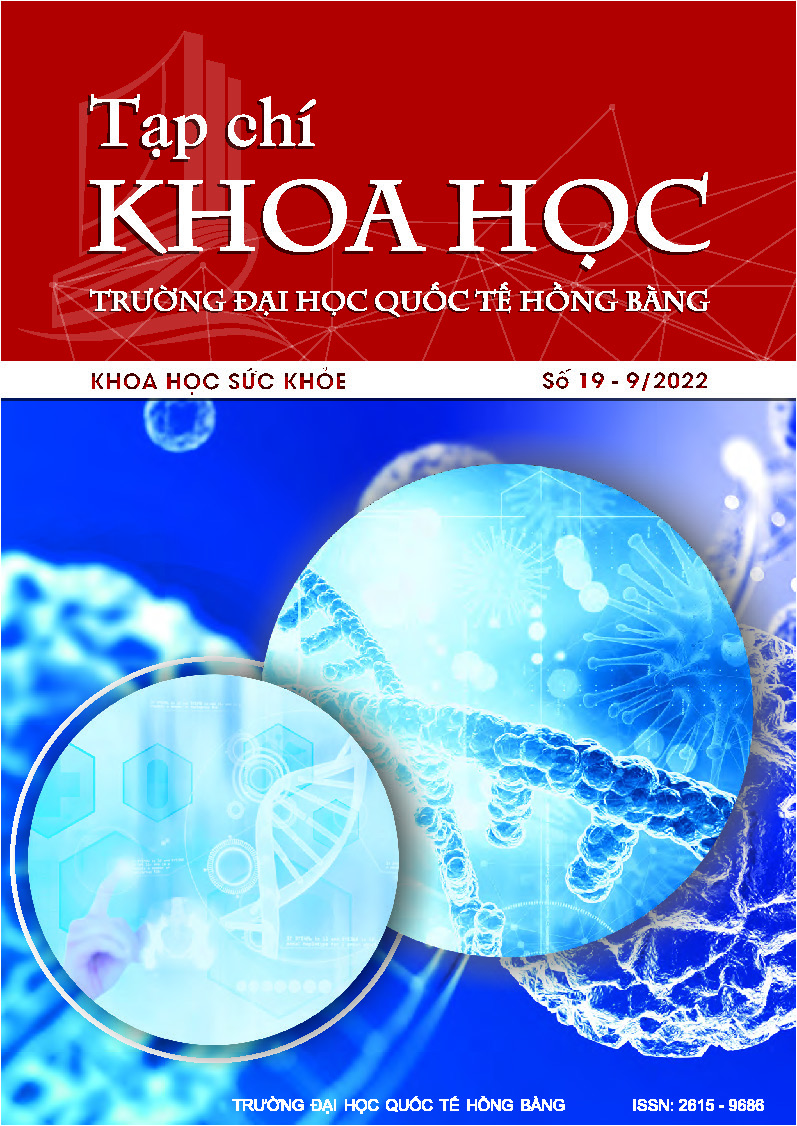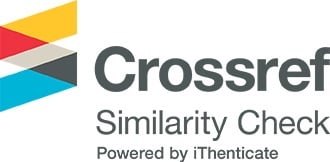Phân lập và lưu trữ vi khuẩn Fusobacterium nucleatum từ mảng bám dưới nướu của bệnh nhân viêm nha chu
Các tác giả
Từ khóa:
vi khuẩn Fusobacterium nucleatum (Fn), mảng bám dưới nướu, giải trình tự SangerTóm tắt
Mục tiêu: Phân lập và lưu trữ chủng vi khuẩn Fusobacterium nucleatum (Fn) từ mảng bám dưới nướu của bệnh nhân viêm nha chu. Phương pháp: Mẫu thu thập được từ mẫu mảng bám dưới nướu của bệnh nhân viêm nha chu giai đoạn III và IV có độ tuổi 18 - 65, vận chuyển và nuôi cấy trong môi trường chọn lọc, ủ 37oC trong điều kiện kỵ khí trong tối thiểu 3 ngày. Sau khi xác định gram, hình dáng và màu sắc đặc trưng, mẫu khuẩn lạc được gửi định danh bằng phương pháp giải trình tự Sanger. Thu thập mẫu cho tới khi nuôi cấy thành công vi khuẩn và lưu trữ ở nhiệt độ -80oC. Kết quả: Vi khuẩn Fn nuôi cấy thành công và kết quả giải trình tự khẳng định chủng vi khuẩn phân lập. Kết luận: Fn là vi khuẩn có vai trò quan trọng trong sinh bệnh học nha chu. Nuôi cấy và lưu trữ thành công vi khuẩn Fn từ mảng bám dưới nướu của bệnh nhân viêm nha chu tạo nguồn vi khuẩn sẵn có, phục vụ cho các thí nghiệm nghiên cứu đa dạng trong y sinh học và nha khoa.
Abstract
Objective: To isolate and store Fusobacterium nucleatum (Fn) from clinical subgingival plaques of periodontitis patients. Methods: Subgingival plaque samples collected from patients with periodontitis stade III and IV, aged 18 - 65, were used to recover Fn. After growing in selective media and anaerobic conditions in at least three days, the colony was identified by PCR and Sanger sequencing. The sample collection process was performed until successful Fn identification. The bacteria were stored at -80oC. Results: The Fn was successfully isolated and stored. Conclusion: Fn is a major putative oral pathogen. This pure bacterial culture will be helpful for other experimental studies in dental and medical areas.
Tài liệu tham khảo
[1] M.G Newman, H. H Takei, P. R Klokkevold and F. A Carranza, Newman and Carranza's clinical periodon-tology, 13th edition, Philadelphia, PA : Elsevier, 2019.
[2] J.G. Caton, G. Armitage, T. Berglundh, … and M.S. Tonetti, “A new classification scheme for periodontal and peri‐implant diseases and conditions - Introduction and key changes from the 1999 classification”, Journal of Clinical Periodontology, Vol 45, S20, pp.S1 - S8, 2018. DOI: 10.1111/jcpe.12935
[3] D.F. Kinane, P.G Stathopoulou and P.N Papapanou, “Periodontal diseases”, Nature Reviews Disease Primers, 3, 17038, 2017. DOI: 10.1038/nrdp.2017.38
[4] C.A. Brennan and W.S. Garrett, “Fusobacterium nucleatum - symbiont, opportunist and oncobacterium”, Nature reviews Microbiology, Vol 17, 3, pp.156-166, 2019. DOI: 10.1038/s41579-018-0129-6
[5] C.A. Field, M.D. Gidley, P.M. Preshaw and N. Jakubovics, “Investigation and quantification of key periodontal pathogens in patients with type 2 diabetes”, Journal of Periodontal Research, Vol 47, 4, pp.470 - 478, 2012. DOI: 10.1111/j.1600-0765.2011.01455.x
[6] A.C. Didilescu, D. Rusu, A. Anghel,… and S.I. Stratul, “Investigation of six selected bacterial species in endo-periodontal lesions”, International Endodintic Journal, Vol 45, 3, pp.282-293, 2012. DOI: 10.1111/j.1365-2591.2011.01974.x
[7] J.W. Vincent, J.B. Suzuki, W.A. Falkler Jr, W.C. Cornett, “Reaction of human sera from juvenile periodontitis, rapidly progressive periodontitis, and adult periodontitis patients with selected periodontopathogens”, Journal of Perio-dontology, Vol 56, 8, pp.464 - 469, 1985. DOI: 10.1902/jop.1985.56.8.464
[8] X. Wang, C.S. Buhimschi, S. Temoin,… and I.A. Buhimschi, “Comparative microbial analysis of paired amniotic fluid and cord blood from pregnancies complicated by preterm birth and early-onset neonatal sepsis”, PLoS One, Vol 8, 2, e56131, 2013. DOI: 10.1371/journal.pone.0056131
[9] Y.W. Han and X. Wang, “Mobile Microbiome: Oral Bacteria in Extra-oral Infections and Inflammation”, Journal of Dental Research, Vol 92, 6, pp.485 - 491, 2013. DOI: 10.1177/0022034513487559
[10] K.Q. de Andrade, C.L.C Almeida-da-Silva and R. Coutinho-Silva, “Immunological Pathways Triggered by Porphyromonas gingivalis and Fusobacterium nucleatum: Therapeutic Possibilities?”, Mediators of inflammation, 2019:7241312, 2019. DOI: 10.1155/2019/7241312
[11] N. Doan, A. Contreras, J. Flynn, J. Morrison and J. Slots, “Proficiencies of three anaerobic culture systems for recovering periodontal pathogenic bacteria”, Journal of Clinical Microbiology, Vol 37, 1, pp.171 - 174, 1999. DOI: 10.1128/JCM.37.1.171-174.1999
[12] C.B. Walker, D. Ratliff, D. Muller, R. Mandell and S.S. Socransky, “Medium for selective isolation of Fusobacterium nucleatum from human periodontal pockets”, Journal of Clinical Microbiology, Vol 10, 6, pp.844 - 849, 1979. DOI: 10.1128/jcm.10.6.844-849.1979
[13] A.L. Leber, “Incubation Techniques for Anaerobic Bacteriology Specimens”, in Clinical Microbiology Procedures Handbook, 4th edition, Washington DC: ASM Press, 2016, pp.441-444
[14] X. Gu, L.J Song, L.X. Li, T. Liu, … and X.L. Zuo, “Fusobacterium nucleatum Causes Microbial Dysbiosis and Exacerbates Visceral Hyper-sensitivity in a Colonization-Independent Manner”, Frontiers in microbiology, Vol 11, 1281, 2020. DOI: 10.3389/fmicb.2020.01281
[15] P. Ortiz, N.F. Bissada, L. Palomo, … and A. Askari, “Periodontal therapy reduces the severity of active rheumatoid arthritis in patients treated with or without tumor necrosis factor inhibitors”, Journal of Periodontology, Vol 80, 4, pp.535-540, 2009. DOI: 10.1902/jop.2009.080447
[16] L.C. Yang, S.W. Hu, M. Yan, … and Y.Y Lin, “Antimicrobial activity of platelet-rich plasma and other plasma preparations against periodontal pathogens”, Journal of Periodon-tology, Vol 86, 2, pp.310-318, 2015. DOI: 10.1902/jop.2014.140373
[17] Y.W. Han, “Fusobacterium nucleatum: a commensal-turned pathogen. Current opinion in microbiology”, Current Opinion in Micro-biology, Vol 23, pp.141 - 147, 2015. DOI: 10.1016/j.mib.2014.11.013 [18] A. Saito, S. Inagaki, R. Kimizuka, … and K. Ishihara, “Fusobacterium nucleatum enhances invasion of human gingival epithelial and aortic endothelial cells by Porphyromonas gingivalis”, FEMS Immunology & Medical Microbiology, Vol 54, 3, pp.349 - 355, 2008. DOI: 10.1111/j.1574-695X.2008.00481.x.
[19] K. Boutaga, A.J. Winkelhoff, C.M. Vandenbroucke-Grauls, and P.H. Savelkoul, “Periodontal pathogens: A quantitative comparison of anaerobic culture and real-time PCR”, FEMS Immunology & Medical Microbiology, Vol 45, 2, pp.191 - 199, 2005. DOI: 10.1016/j.femsim.2005.03.011
[20] S.R. Moraes, J.F. Siqueira Jr, A.P. Colombo, … and R.M. Domingues, “Comparison of the effectiveness of bacterial culture, 16S rDNA directed polymerase chain reaction, and checkerboard DNA-dNA hybridization for detection of Fusobacterium nucleatum in endodontic infections”, Journal of Endodontics, Vol 28, 2, pp. 86 - 89, 2002. DOI: 10.1097/00004770-200202000-00009
[21] P.M. Jervøe-Storm, M. Koltzscher, W. Falk, A. Dörfler, and S.Jepsen, “Comparison of culture and real-time PCR for detection and quantification of five putative periodon-topathogenic bacteria in subgingival plaque samples”, Journal of Clinical Periodontology, Vol 32, 7, pp.778-783, 2005. DOI: 10.1111/j.1600-051X.2005.00740.x
[22] T. Thurnheer, L. Karygianni, M. Flury, and G.N. Belibasakis, “Fusobacterium Species and Subspecies Differentially Affect the Composition and Architecture of Supra- and Subgingival Biofilms Models”, Frontiers in microbiology, Vol 10, 1716, 2019. DOI: 10.3389/fmicb.2019.01716
[23] P.I. Diaz, P.S. Zilm, and A.H. Rogers, “Fusobacterium nucleatum supports the growth of Porphyromonas gingivalis in oxygenated and carbon-dioxide-depleted environments”, Microbiology (Reading), Vol 148, Pt 2, pp.467-472, 2002. DOI:10.1099/00221287-148-2-467
[24] K. Kotsilkov, C. Popova, L. Boyanova, L.Setchanova, and I. Mitov, “Comparison of culture method and real-time PCR for detection of putative periodontopathogenic bacteria in deep periodontal pockets”, Biotechnology & Biotechnological Equipment, Vol 29, 5, pp.996-1002, 2015. DOI: 10.1080/13102818.2015.1058188
[25] M. Gajardo, N. Silva, L. Gómez León R, and J. Gamonal, “Prevalence of periodontopathic bacteria in aggressive periodontitis patients in a Chilean population”, Journal of Periodon-tology, Vol 76, 2, pp.289-294, 2005. DOI: 10.1902/jop.2005.76.2.289
[26] W.J. Loesche, D.E. Lopatin, J. Stoll, N. van Poperin, and P. P. Hujoel, “Comparison of various detection methods for periodontopathic bac- teria: can culture be considered the primary reference standard?”, Journal of Clinical Micro-biology, Vol 30, 2, pp.418-426, 1992. DOI: 10.1128/jcm.30.2.418-426.1992
Tải xuống
Tải xuống: 88







